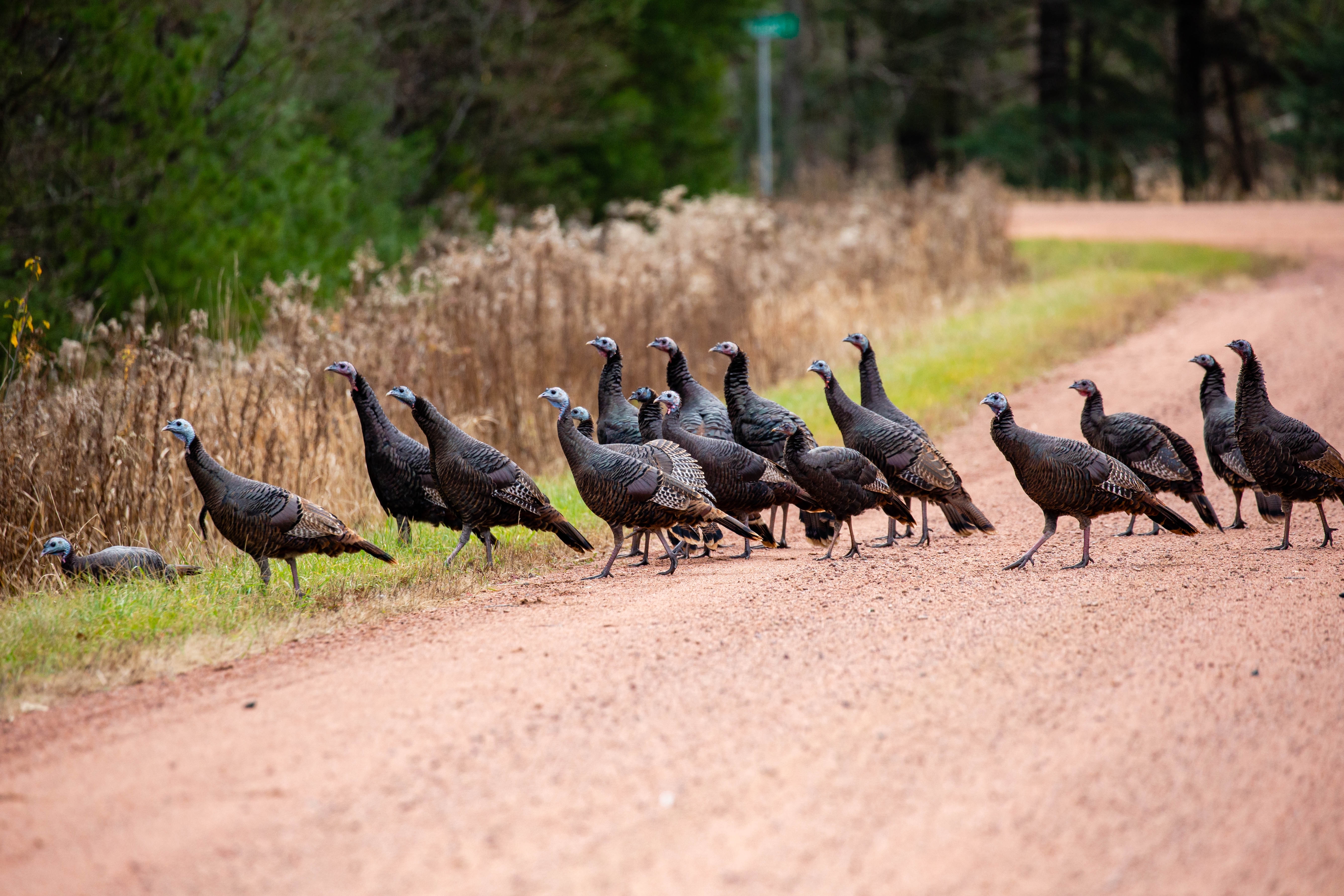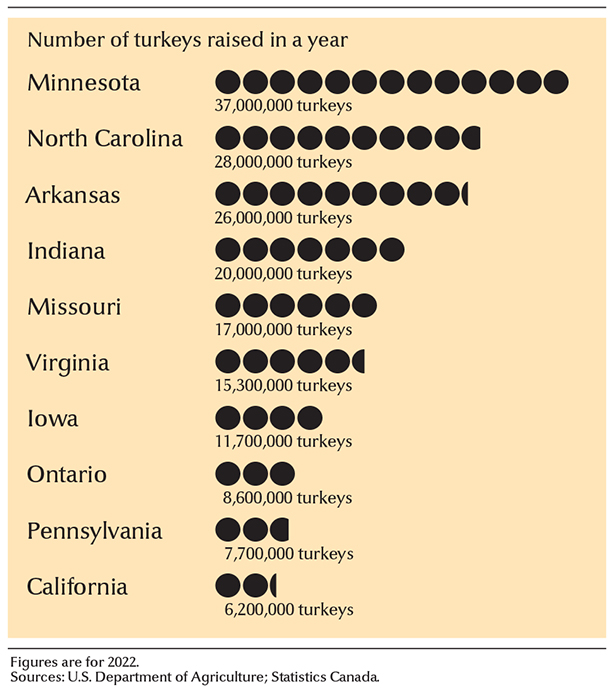Turkey is a large North American bird related to chickens, peafowl, and pheasants. Native Americans raised turkeys for food as early as A.D. 500. Today, most traditional Thanksgiving dinners in North America and many Christmas dinners around the world include turkeys.
Loading the player...Turkey spreading its tail feathers
Male turkeys are called toms, and female turkeys are known as hens. Baby turkeys are called poults. Scientists classify two species of wild turkeys: the ocellated turkey and the North American turkey. The ocellated turkey lives in Guatemala and the Yucatán Peninsula of Mexico. It has brilliant coloring with eyelike spots on its tail. The North American turkey inhabits the United States and other areas in Mexico. This article mostly discusses the North American turkey.
The body of a turkey.
Toms have reddish and featherless heads and necks. A long, loose piece of skin called a wattle extends from beneath the lower jaw along the neck. At the base of the neck are small, wartlike structures called caruncles. A long, beardlike tuft of bristly feathers hangs from the center of the breast. Wild toms have deep bronze-colored plumage. The color of domestic toms depends on the variety. Adult hens have dull coloring and rarely possess a beardlike tuft of feathers.
Adult toms usually have a wingspan of about 4 feet (1.2 meters). Wild toms weigh from 10 to 16 pounds (4.5 to 7.3 kilograms), but domestic toms can weigh as much as 50 pounds (23 kilograms). Hens grow smaller than toms. Wild hens weigh from 6 to 10 pounds (2.7 to 4.5 kilograms), while some domestic hens weigh as much as 16 pounds (7.3 kilograms). Wild turkeys can fly and run quickly. However, domestic turkeys cannot fly because their wings cannot support their considerably greater body weight.


How wild turkeys live.
Wild turkeys gather in small flocks in the forests. They eat seeds, insects, and small nuts and fruits. At night, wild turkeys rest in trees. They build simple nests of dry leaves on the ground. Turkey eggs have a creamy-tan color, speckled with brown.
Domestic turkeys.
Native Americans from what is now the southwestern United States, Mexico, and Central America first domesticated turkeys. In about 1520, Spanish explorers introduced the domesticated Mexican turkey to Spain. This turkey soon spread rapidly across Europe. During the 1600’s, settlers brought the domestic turkey from Europe to the American Colonies. They soon crossbred their turkey with wild turkeys that lived around them. Such breeding led to the development of many modern varieties of turkeys.


Today, the major turkey varieties are the Bronze, the White Holland, the Narragansett, the Bourbon Red, the Black, the Slate, the Royal Palm, and the Beltsville Small White. The most popular commercially raised turkey, the Broad-Breasted White, is a hybrid developed from crossbreeding the White Holland with a subvariety of the Bronze called the Broad-Breasted Bronze. Broad-Breasted Whites have all-white plumage.
The Bronze turkey, once the most popular commercial variety, has dull black feathers glossed with red and green on the front and bronze in the rear. Its tail feathers have white tips. The White Holland possesses white feathers. The Narragansett resembles the Bronze but does not have the red and green or bronze colors. The Bourbon Red is brownish-red with white wings. The Black turkey is all black, and the Slate turkey has slate-colored feathers. The Royal Palm is black and white. The Beltsville Small White is all white.
Turkeys need much the same care as chickens but require more living space. Turkeys are more delicate than chickens, especially when young. Turkeys are particularly susceptible to cold rains. Young turkeys need more nutrients than young chickens because they grow faster. Toms reach market weight—about 22 pounds (10 kilograms) on average—approximately 17 weeks after they hatch. Hens are marketed at around 14 weeks of age, and they weigh about 14 pounds (6.4 kilograms) on average.
Because of their size, turkeys yield a large amount of meat per bird. Large turkeys often provide meat for restaurants. However, they are too large for most families to eat at one meal. As a result, the turkey industry has developed boneless turkey roasts and steaks and ground turkey for sale to consumers. Food companies process turkey meat to make such products as cold cuts and hot dogs.
See also Poultry (Raising poultry).
